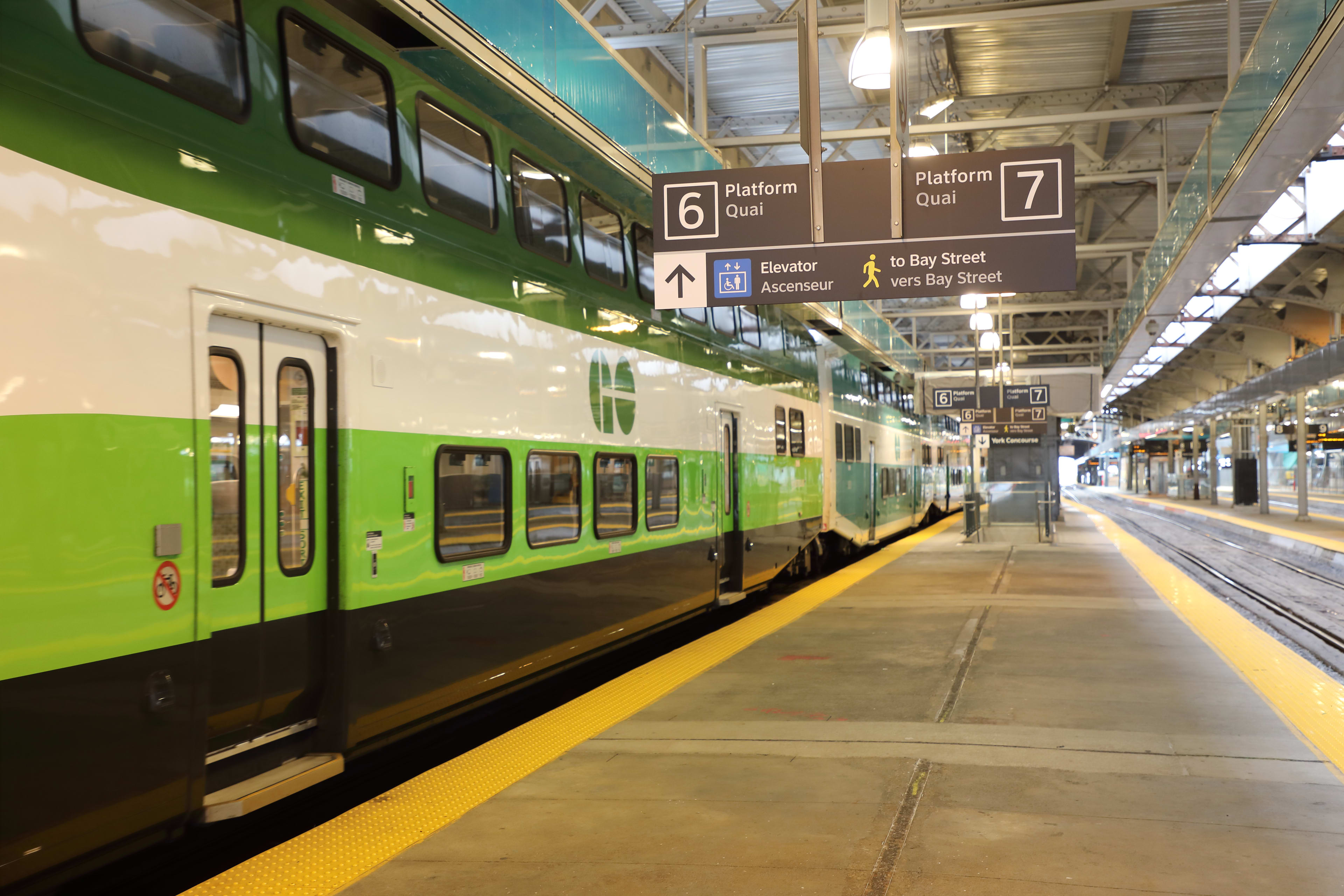Can GO Transit add more trains when they want to? Not quite.
Metrolinx News is breaking down the process of adding more trains during a peak in traffic.
Nov 12, 2019
A big event takes place in Toronto, or along any of our GO Transit routes.
A civic parade, where everyone, it seems, decides to take a day off and attend.
Or the first game once a Toronto team reaches the playoffs.
GO vehicles suddenly are crammed with people.
And as a reasonable customer, you patiently stand in line and wonder: “They knew this was happening – why didn’t they just add more trains?”
Adding more trains into service, especially during a sudden peak event, is not as simple as you would think. It’s a bit of a science. (Stacey Kenny photo)
Although it might seem like an easy process, it’s not as simple as plucking a train from an endless supply and dropping it down anywhere on the tracks at any given time – especially during the afternoon rush hour when the system is most stressed.
When you want to add a vehicle weighing just over 1,100 metric tonnes to a rail line, well, that takes coordination and more than a little planning.
Union Station is the nucleus of the GO Transit train system, with 373 train trips per day starting and finishing in the downtown hub. Of those 373 trips, 92 are scheduled to arrive and depart from Union Station in the morning rush between 6:30 to 9:30 a.m., and another 105 during the afternoon/evening rush from 3:30 p.m. to 7:30 p.m. In addition to GO trains, 160 UP Express trains arrive and depart Union Station daily, adding to the congestion on the rail corridor.
“We have to squeeze all those trips into a small window of time,” says Doug Tuira, senior manager of Network Operations Control. “The majority of passengers are heading into or out of Union Station.”
Toronto’s Union Station sees more than 300,000 visitors each day. Keeping GO Transit and UP Express customers on the right track, while increasing service on major lines, is a priority. But what happens when there’s a sudden demand for more trains? (Thane Burnett photo)
Even with spacing trains out of Union Station every 10 to 15 minutes, other factors such as arrival, departure, loading and unloading customers take up time. Add all that up and there is very little room to squeeze more trains into Union Station during the afternoon rush, when most of the congestion occurs.
“Union Station is the biggest bottleneck in the system,” Tuira says, adding 12-car trains can carry more than 1,800 customers. “For every train going home, Union Station is the constant. We have capacity issues around rush hour and if we could add more trains, we would.”
And even if trains could be added around the afternoon rush, one main question is always weighed: do you keep the status quo and aim for relatively seamless service, or open up the system to possible ripple delay effects?
“We try to plan around the seamless level and we’re at that point now in Union Station,” Tuira says.
“Cascading issues are far greater if we try to add trains. Slow is smooth and smooth is fast.”
For events expected to draw large crowds – like the recent Toronto Raptors victory parade – a bigger emphasis is placed on customer safety, including monitoring platform crowding and deploying Transit Safety Officers to high traffic areas rather than adding trains.
“It’s a balance,” Tuira says.
“You want to provide the best service you can. We want to add service as much as we can. We look at what’s the most we can absolutely squeeze in, but there comes a point where there is no longer a successful outcome. It will hurt our outcome.”
Not that extra trains aren’t added. They routinely are in cases when more capacity is needed when something big is taking place. But their introduction is controlled and not flooded in, nose to tail.
The tracks leading into the Union Station train shed. (Matt Llewellyn photo)
Think about any highway that becomes gridlocked with extra cars suddenly. For safety’s sake – along with strict government regulations about how trains move in Canada – that could never be allowed on rail lines.
Now add into the fact that GO trains share those steel rails with other services, including freight partners who must get their goods to where they are going.
Trains have to be introduced when it’s certain the line can accommodate them – along with a place for them to pull into at their destination.
Otherwise it would be rail and real chaos.
And if that were to happen, customers would have even more questions for us.
by Fannie Sunshine Metrolinx media relations advisor
